.
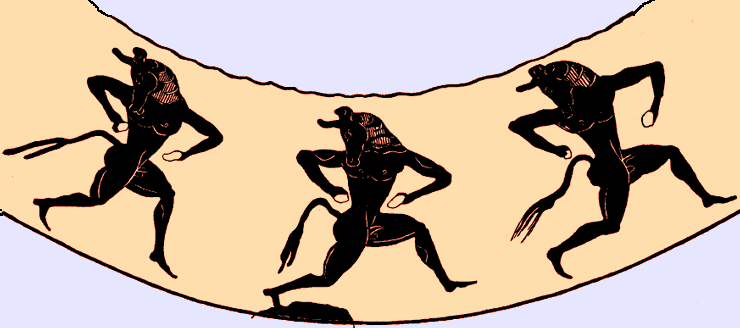
In Greek mythology, the Minotaur (Μινώταυρος) was a creature that was half man and half bull. It dwelt in the Labyrinth, which was an elaborate maze constructed by King Minos of Crete and designed by the architect Daedalus to hold the Minotaur. The Minotaur was eventually killed by Theseus.
"Minotaur" is Greek for "Bull of Minos". The bull was also known as Asterius or Asterion, a name shared with Minos's foster father.
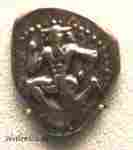
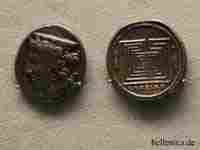
Before Minos became king, he asked the Greek god Poseidon for a sign, to assure him that he, and not his brother, was to receive the throne. Poseidon agreed to send a white bull on condition Minos would sacrifice the bull back to the god. Indeed a bull of unmatched beauty came out of the sea. King Minos, after seeing it, instead sacrificed another bull, hoping that Poseidon would not notice. Poseidon was very angry when he realised what had been done so he caused Minos's wife Pasiphae to be overcome with a fit of madness in which she fell in love with the bull. Pasiphae went to Daedalus for assistance, and Daedalus devised a way for her to satisfy her passions. He constructed a hollow wooden cow covered with cowhide for Pasiphae to hide in and allow the bull to mount her. The result of this union was the Minotaur. In some accounts, the white bull went on to become the Cretan Bull captured by Heracles for one of his labours.
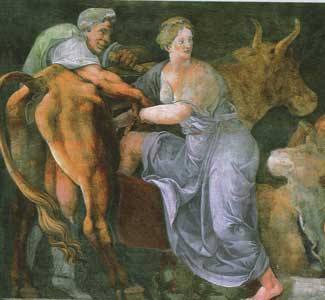
Pasiphae entrers in Daedalus wooden cow, Giulio Romano c.1530.
The Minotaur had the body of a man and the head and tail of a bull. It was a fierce creature, and Minos, after getting advice from the Oracle at Delphi, had Daedalus construct a gigantic labyrinth to hold the Minotaur. It was located under Minos' palace in Knossos.
Now it happened that Androgeus, son of Minos, had been killed by the Athenians, who were jealous of the victories he had won at the Panathenaic festival. To avenge the death of his son, Minos waged war and won. He then demanded that seven Athenian youths and seven maidens be sent every ninth year to be devoured by the Minotaur. When the third sacrifice came round, Theseus volunteered to go to slay the monster. Ariadne, Minos' daughter, fell in love with Theseus and helped him get out of the maze by giving him a ball of thread, allowing him to retrace his path. Theseus killed the Minotaur (with a magical sword Ariadne had given him) and led the other Athenians back out the labyrinth. (Plutarch, Theseus, 15—19; Diod. Sic. i. I6, iv. 61; Apollodorus iii. 1,15).
Minos, angry that Theseus was able to escape, imprisoned Daedalus and his son Icarus in the labyrinth. They were able to escape by building wings for themselves, but Icarus died during the escape.
Sometimes the Minotaur is represented as a bull with a human torso instead of a head, like a bull version of the Centaur.
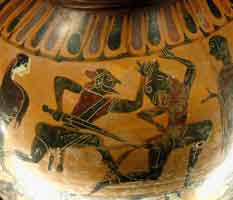
Theseus and the Minotaur, Castellani Painter
Interpretations
The contest between Theseus and the Minotaur was frequently represented in Greek art. A Knossian didrachm exhibits on one side the labyrinth, on the other the Minotaur surrounded by a semicircle of small balls, probably intended for stars; it is to be noted that one of the monster's name, was Asterius.
The ruins of Minos' palace at Knossos have been found, but the labyrinth has not. The enormous number of rooms, staircases and corridors in the palace has led archaeologists to believe that the palace itself was the source of the labyrinth myth.
Some modern mythologists regard the Minotaur as a solar personification and a Greek adaptation of the Baal-Moloch of the Phoenicians. The slaying of the Minotaur by Theseus in that case indicates the abolition of such sacrifice by the advance of Greek civilization.
According to A. B. Cook, Minos and Minotaur are only different forms of the same personage, representing the sun-god Zeus of the Cretans, who depicted the sun as a bull. He and J. G. Frazer both explain Pasiphae's union with the bull as a sacred ceremony, at which the queen of Knossos was wedded to a bull-formed god, just as the wife of the Tyrant in Athens was wedded to Dionysus. E. Pottier, who does not dispute the historical personality of Minos, in view of the story of Phalaris considers it probable that in Crete (where a bull-cult may have existed by the side of that of the double axe) victims were tortured by being shut up in the belly of a red-hot brazen bull. The story of Talos, the Cretan man of brass, who heated himself red-hot and clasped strangers in his embrace as soon as they landed on the island, is probably of similar origin.
A political interpretation has that the Greeks freed themselves from the tributes and the power of Crete.

Theseus Slaying the Minotaur, Antoine-Louis Barye, 1841-46 , bronze, 47 cm Musée du Louvre, Paris [Source]
Fictional appearances
Minotaurs appear in fantasy and historical fiction far less frequently than other mythological beings such as centaurs. In the Divine Comedy Dante and Virgil confront "the infamy of Crete" at the entrance to the seventh circle of Hell. In Mary Renault's The King Must Die and Federico Fellini's movie Satyricon, minotaurs are merely men wearing bull's head masks. Terry Gilliam's movie Time Bandits is less clear on this point, since the minotaur is not unmasked and therefore might be real.
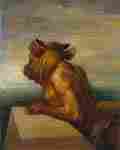
Thomas Burnett Swann's novels Day of the Minotaur (1965), The Forest of Forever (1971) and Cry Silver Bells (published posthumously, 1977), which form a loose trilogy in reverse order and were later published as an omnibus volume in chronological order as The Minotaur Trilogy, depict the last two survivors of an ancient race of minotaurs dwelling in the forests of ancient Crete alongside other mythological creatures. Swann's minotaurs are described as being more human-like than the classical description, with hoof-like toes, bull's tail, fur-covered (usually naked) bodies, human faces, large pointed ears, and short horns that grow like antlers. They are an intelligent, cultured race, which belies their sometimes fearsome appearance, and fluent in Greek ("What did you expect me to do, moo or speak Hittite?").
In 2005, a film is to be released.
- Nikos Kazantzakis , At Palaces Of Knossos ,Ohio University Press , 0821408801
- Mary Renault , The Bull from the Sea- , Vintage, ISBN: 0375726802
See also : Greek Mythology. Paintings, Drawings
| Ancient Greece
Science, Technology , Medicine , Warfare, , Biographies , Life , Cities/Places/Maps , Arts , Literature , Philosophy ,Olympics, Mythology , History , Images Medieval Greece / Byzantine Empire Science, Technology, Arts, , Warfare , Literature, Biographies, Icons, History Modern Greece Cities, Islands, Regions, Fauna/Flora ,Biographies , History , Warfare, Science/Technology, Literature, Music , Arts , Film/Actors , Sport , Fashion --- |
Retrieved from "http://en.wikipedia.org"
All text is available under the terms of the GNU Free Documentation License

